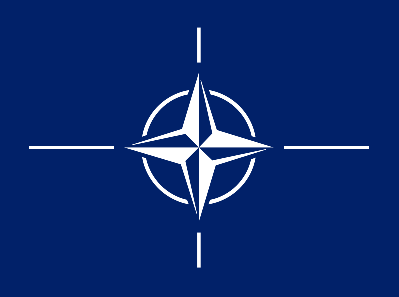NATO

Background and history
The countries that fought Nazi Germany and the Axis powers during the Second World War formed the Allies. For some of the leading Allies, such as the Soviet Union, the United States and Britain, the union was based on opposition to the Axis rather than common ideals and beliefs. By 1944, the relationship between the Soviet Union and the Western Allies was strained, and distrust grew on both sides.
When the war was over, the relationship became worse, especially when Soviet Russia insisted on staying in many of the countries of Eastern Europe and supported the establishment of communist governments there.
In March 1946, the former British prime minister Winston Churchill, on a visit to Fulton, Missouri, stated that ‘From Stettin in the Baltic to Trieste in the Adriatic, an iron curtain has descended across the continent.’ A year later, attempts by the American, British and Soviet foreign ministers to draw up peace treaties for Germany and Austria ended in failure. The Allied war-time co-operation had collapsed and, instead, a hostile relationship developed between East and West.
In April 1949, ten Western European countries including Britain, along with the United States and Canada, signed the Washington Treaty, which created the North Atlantic Treaty Organisation (NATO, also known as the North Atlantic Alliance), a collective security system.
According to the Treaty, ‘the fundamental role of NATO is to safeguard the freedom and security of its member countries by political and military means’. In Article 5, NATO’s intentions are clear: ‘an armed attack against one or more of them in Europe or North America shall be considered an attack against them all.’
In 1951, Greece and Turkey also joined NATO, followed by West Germany in 1955. In response to NATO, the Soviet Union formed the Warsaw Pact in 1955. The Pact was a security agreement amongst the Soviet countries of Eastern Europe.
Throughout the Cold War, NATO carried out training exercises and developed technology in case of conflict with the Soviet Union and Warsaw Pact countries. Although tensions became extreme on a couple of occasions, NATO forces were never put into operation until after the collapse of the Soviet Union.
On 28 February 1994, NATO took part in its first military action, shooting down four Bosnian Serb aircraft violating a UN-mandated no-fly zone over central Bosnia and Herzegovina. NATO also took part in air strikes that helped bring the war in Bosnia to an end, resulting in the Dayton Agreement.
On 24 March 1999, NATO led broad-scale military engagement when it became involved with the Kosovo War. There was an 11-week bombing campaign against the Federal Republic of Yugoslavia. The conflict ended on 11 June 1999, when the Yugoslavian leader Slobodan Milošević agreed to NATO’s demands by accepting a UN resolution (1244). NATO then helped establish the KFOR, a NATO-led force under a United Nations mandate that operated the military mission in Kosovo.
NATO today
NATO does not have its own army; instead, the countries that make up the organisation assign their own troops to its activities. All member countries that participate in the military aspect of the Alliance contribute forces and equipment, which together constitute the integrated military structure of the Alliance. These forces and assets remain under national command and control until such time as they are required by NATO for a specific purpose. NATO, however, does possess some common capabilities owned and operated by the Alliance, such as the AWACS early warning radar aircraft.
NATO headquarters, the Supreme Headquarters Allied Powers Europe (SHAPE), began in Paris, but they were moved to Belgium after France’s partial withdrawal from NATO in 1966. In addition to the headquarters, there are NATO military bases all across Europe.
In August 2003, NATO began its first action outside Europe when it took control over International Security Assistance Force (ISAF) in Afghanistan.
In the summer of 2007, tensions between NATO and Russia developed after NATO’s European allies called for a NATO missile defence system that would complement the American National Missile Defense system in order to protect Europe. The bases for the system would be in Central and Eastern Europe. President Putin of Russia has claimed that the new system is a ‘threat’ or provocation to Russia. NATO has insisted that the defence system is necessary, resulting in Putin withdrawing from the 1990 Treaty on Conventional Armed Forces in Europe.
- Approximately 18,000 military personnel are engaged in NATO missions around the world, managing often complex ground, air and naval operations in all types of environment.
- Currently, NATO is operating in Afghanistan, Kosovo and the Mediterranean. NATO is also supporting the African Union and conducting air policing missions on the request of its Allies.
- Furthermore, NATO is assisting with the response to the refugee and migrant crisis in Europe and has Patriot missiles and AWACS aircraft deployed in Turkey. It also carries out disaster relief operations and missions to protect populations against natural, technological and humanitarian disasters.




